The Literature Book: Big Ideas Simply Explained - James Canton 2016
To describe directly the life of humanity or even of a single nation, appears impossible • War and Peace, Leo Tolstoy
Depicting real life • 1855–1900
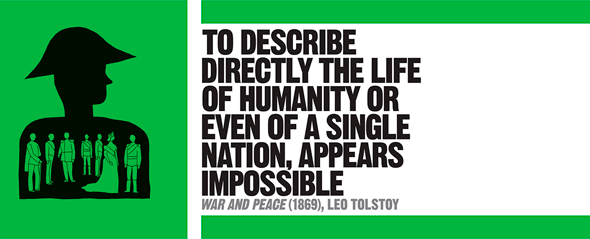
IN CONTEXT
FOCUS
Russia’s Golden Age
BEFORE
1831—32 The publication of Nikolai Gogol’s Evenings on a Farm near the Dikanka and Alexander Pushkin’s Tales of Belkin signal developments in Russian literature away from the folkloric forms of the past.
1866 Fyodor Dostoyevsky’s Crime and Punishment brings the science of psychology into literary realism to explore human motivation.
AFTER
1880 Fyodor Dostoyevsky’s novel The Brothers Karamazov is published — the last great novel of Russia’s Golden Age.
1898 Moscow Art Theatre stages The Seagull, which establishes Anton Chekhov as the pre-eminent dramatist of Russia’s Golden Age.
Russia in the 19th century was the seat of enormous creativity in prose, poetry, and drama. Critics have dubbed the period the country’s “Golden Age”, not for any unity of intent among the authors, but for the sheer number of literary works of international significance that emerged there over a short time.
The literature of the Golden Age was heavily influenced by the modernization of Russia in the 18th century. The country, which had been insulated by culture and geography from the Renaissance that affected the rest of Europe from the 14th to the 17th centuries, was rapidly Westernized under Peter the Great, tsar from 1682 to 1725. Peter oversaw the adoption of Western customs, learning, and even language, to the extent that — by the early 19th century — the primary tongue spoken by the Russian aristocracy was French.
The traditional literature of “old Russia”, notably the folk epic, was displaced by writing that focused on more modern themes, and the Russian language itself developed new literary forms that carried through to the 19th century. However, Russian writers did much more than ape the conventions of Western literature. They reacted to and defied its assumptions, and carved out their own uniquely Russian forms of expression, which often looked back to the themes of earlier folktales, and sometimes even challenged the very concept of writing as art. In the West, the writers of Russia’s Golden Age were regarded with curiosity — they were certainly brilliant, but they were also considered savage and unschooled.
The first flowering of the Golden Age early in the 19th century included works from writers such as Alexander Pushkin, Nikolai Gogol, and Ivan Turgenev. A second blossoming in the 1860s and 1870s produced the greatest works of the period, including Fyodor Dostoyevsky’s Crime and Punishment (1866) — a visceral exercise in psychological realism — and Tolstoy’s War and Peace (1869) and Anna Karenina (1875—77). Within a single lifespan, Russian literature had made a series of incredible leaps from a folkloric tradition to far more complex and extensive literary styles.
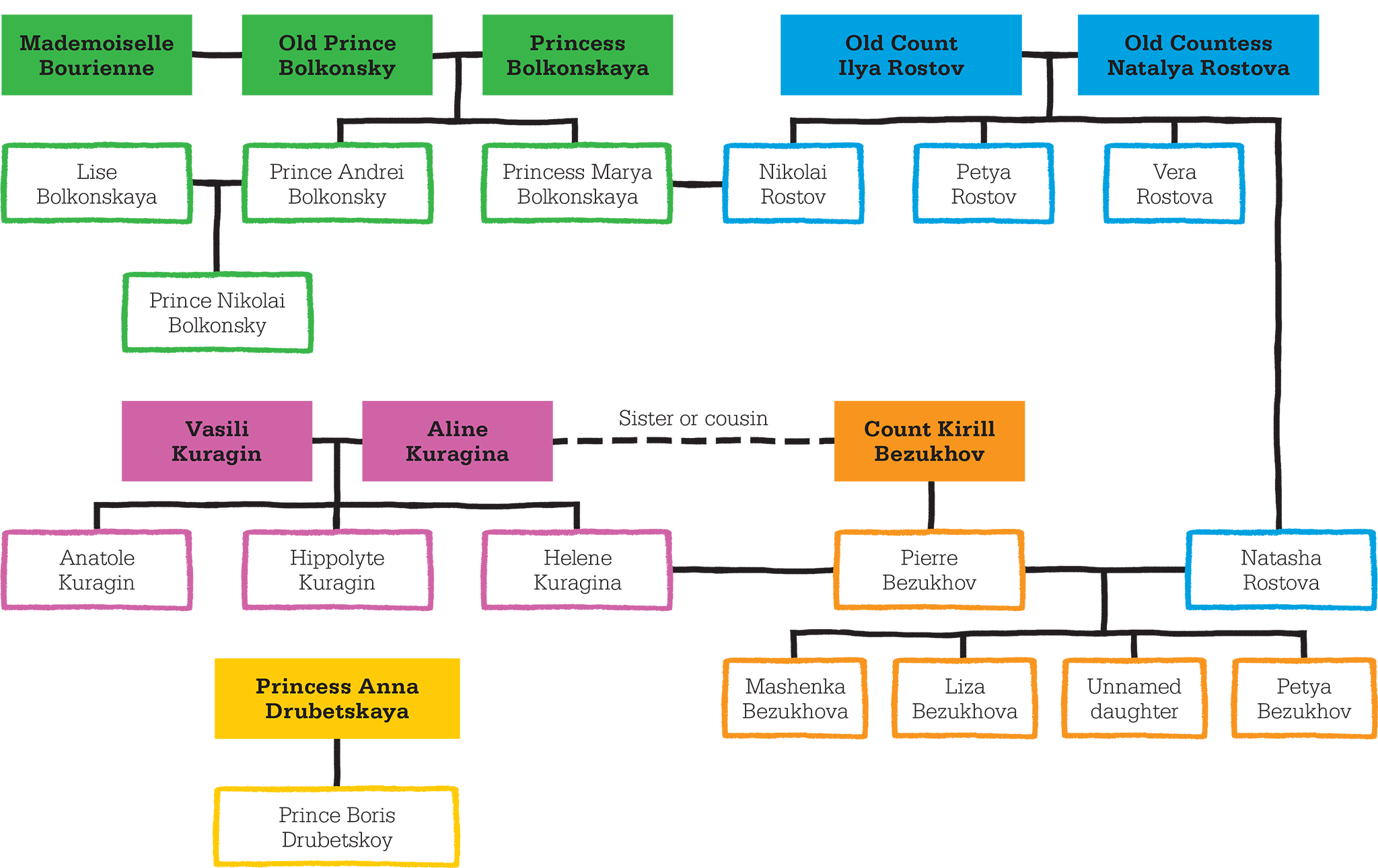
Tolstoy’s expansive epic War and Peace explores Russian identity and history through the experiences of, and interactions between, members of five noble families — the Bezukhovs, the Bolkonskys, the Rostovs, the Kuragins, and the Drubetskoys.
"If no one fought except on his own conviction, there would be no wars."
War and Peace
History writing
A typically Russian ambivalence about Western literary tropes led Tolstoy to write that “There is not a single work of Russian artistic prose… that quite fits the form of a novel, a poem, or a story.” He was reluctant to categorize his masterful War and Peace: “[it is] not a novel, even less is it a poem, and still less a historical chronicle”, he stated in 1868. Tolstoy’s concern was that all historical records had their pitfalls and that the “truth” of history was hard to grasp without an omniscient view. He attempted to achieve such a wide perspective in War and Peace by exploring the experiences of a vast cast of characters — more than 500 in all — from across society. Some of the characters were inspired by people Tolstoy knew in real life: Natasha Rostova, for example, was based on Tolstoy’s wife’s sister. Many of the aristocratic characters were given authentic, but slightly bastardized names: the name of reckless and wilful Bezukhov, for example, translates as “earless”.
War and Peace spans a period of eight years from July 1805, narrating the events of Napoleon’s invasion of Russia up to the eventual burning of Moscow in September 1812. The main narrative follows the rise and fall in the fortunes of five fictional, aristocratic Russian families set against the backdrop of the Napoleonic Wars of the 19th century, linking their personal lives to the history of Russia. Alongside these fictional characters, Tolstoy casts a series of actual historical figures, such as Tsar Alexander and Napoleon, as key players in his epic.
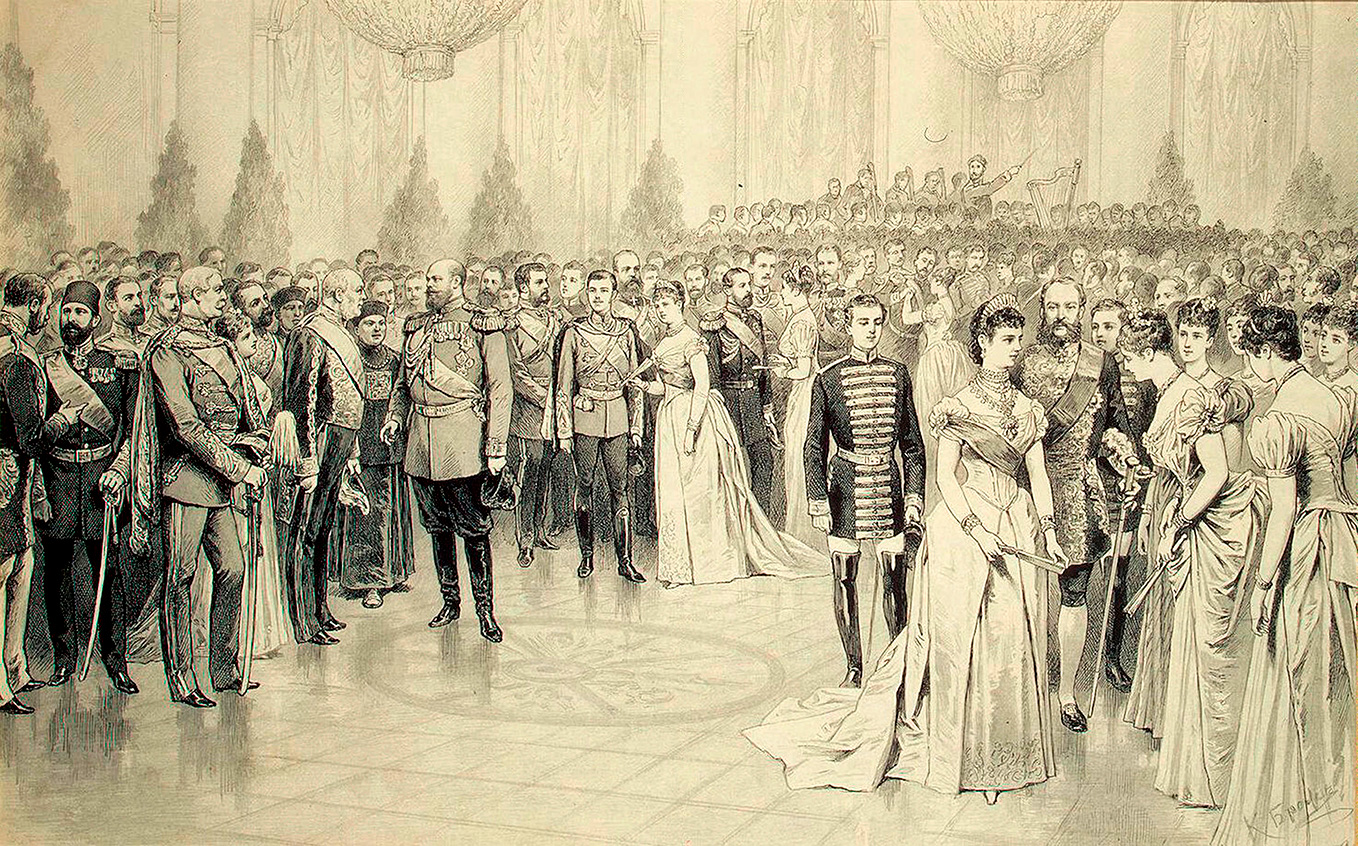
High-society balls of the early 19th century, where attendees dressed in military finery and expensive gowns, characterize Tolstoy’s depiction of the shallow liberalism of St Petersburg.
Introductions
The book begins in the most Westernized of Russian cities — St Petersburg — at a high-society soirée. While Napoleon’s army marches through Italy and heads east, the city’s aristocrats meet to gossip (in French), gamble, drink, and flirt. Significantly, the opening lines of the book, spoken by the hostess of the soirée, Anna Pavlovna Scherer, establish the book’s focus on history, war, and the state of European affairs: “Well, Prince, so Genoa and Lucca are now just family estates of the Buonapartes.”
Tolstoy uses this gathering to introduce readers to some of his leading characters, including Prince Andrei Nikolaevich Bolkonsky, a handsome, intelligent and wealthy figure who will emerge as one of the heroes of the book, and Andrei’s friend Pierre Bezukhov, the ungainly and bulky son of a Russian count, through whom Tolstoy relays his own thoughts and concerns on the best way to live a moral life in an immoral world.
Tolstoy’s narrative then moves to Moscow, where both the city and its people have more traditionally Russian qualities. Here, the reader is introduced to further characters, including Countess Rostova and her four children, one of whom is Natalia Ilyinichna (Natasha) — “black-eyed, wide-mouthed” and “full of life” — whose vibrant energy flits through the pages of the book.
"There’s nothing stronger than those two old soldiers — Time and Patience."
War and Peace
Russia at war
Soon, Russia is at war. Napoleon’s forces march towards Moscow and are met by the Russians some 100km (70 miles) west of the city at the Battle of Borodino on 7 September 1812. Tolstoy paints a vivid image of the bloodbath in which more than 25,000 men were killed in a single day. He presents the thoughts and actions of real-life characters, such as Napoleon and his Russian counterpart Kutusov, alongside those of imagined characters like Andrei and Pierre, allowing readers to see the chaos and brutal truth of war from every perspective. The battle — which was an indecisive victory for the French — marks the turning point of the war.
While life for St Petersburg’s aristocrats continues almost unaffected, Moscow is sacked and burned by Napoleon’s Grand Armée before it retreats. Napoleon’s forces suffer enormous hardships as they withdraw: facing freezing conditions and starvation, they are slaughtered in their thousands by the Russians.
In the book’s two-part epilogue, Tolstoy tells of life in 1813 and beyond, after Napoleon’s army has fled and the war is over, with peace finally restored to Russia and her people.
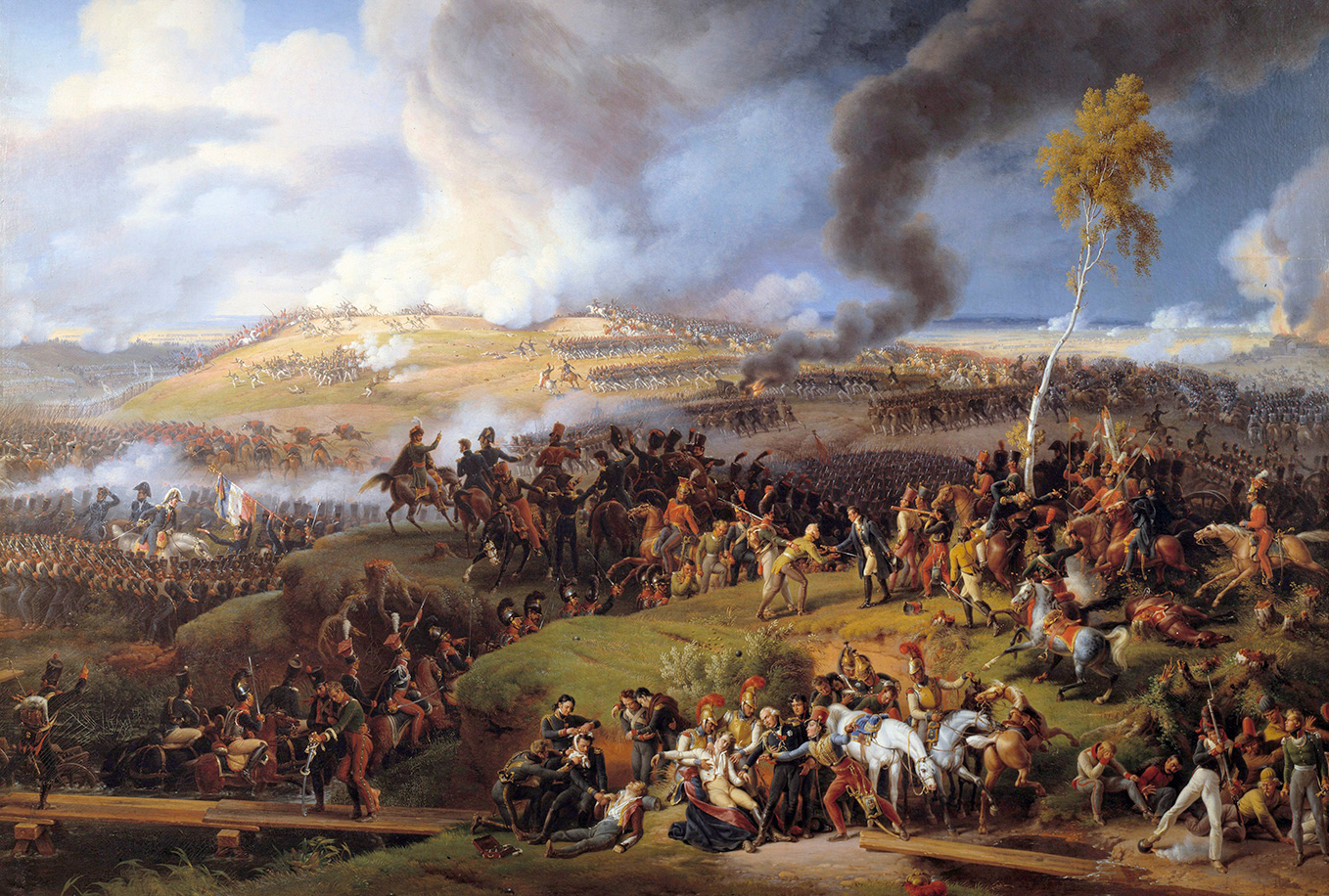
The Battle of Borodino is a key moment in Tolstoy’s War and Peace. In his account, it is the chaos of battle, rather than the orders of leaders, which decide the conflict’s outcome.
The small actions of many
After finishing the stories of his fictional characters, Tolstoy reappraises the historical roles played by Napoleon and Tsar Alexander. He concludes that history is not driven by the actions of great leaders, but by many, small and ordinary events: “History is the life of nations and of humanity.” In War and Peace that vast scale is finely observed, and Tolstoy’s penetrating vision into everyday truths makes the book the vast, grand work that it is.
War and Peace captured the essence of an era. In 1875, it was described by the Russian novelist Ivan Turgenev as “the vast picture of the whole nation’s life”. A century on from its publication, Ernest Hemingway declared that it was from Tolstoy that he had learned to write about war, for no one wrote “about war better than Tolstoy did”. Nor indeed, have many written better on peace.
LEO TOLSTOY
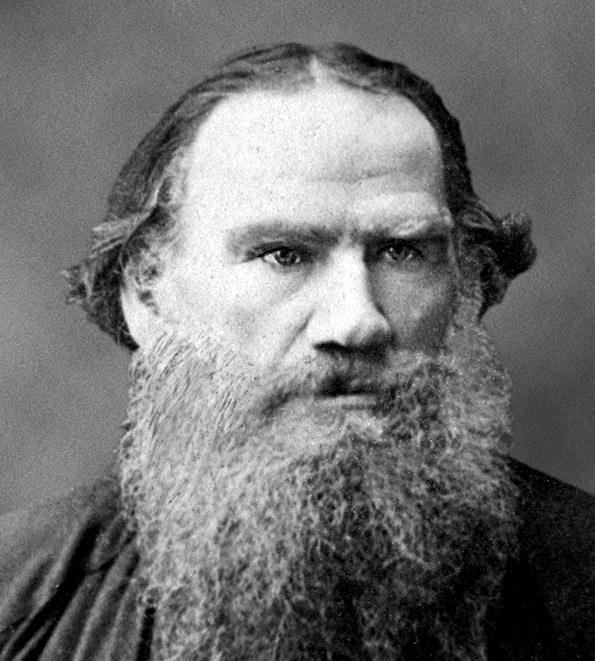
Leo Tolstoy was born near Moscow in 1828 to a noble Russian family. After leaving Kazan University early, Tolstoy led a dissolute life in Moscow and St Petersburg, running up significant gambling debts. He toured Europe in 1860—61, meeting the novelist Victor Hugo and the political thinker Pierre-Joseph Proudhon. Both inspired Tolstoy to return to Russia to write and educate the impoverished serfs. In 1862, Tolstoy married Sophia Andreevna Behrs with whom he had 13 children. Sophia looked after their financial matters, although their marriage became increasingly unhappy. After completing War and Peace and Anna Karenina, Tolstoy sought spiritual and moral truth through his Christianity and by espousing pacifism, influencing figures such as Gandhi and Martin Luther King. He died of pneumonia in 1910, aged 82.
Other key works
1875—77 Anna Karenina
1879 A Confession
1886 The Death of Ivan Ilyich
1893 The Kingdom of God Is Within You
See also: Eugene Onegin • A Hero of Our Time • Dead Souls • Crime and Punishment • The Idiot • Anna Karenina • The Brothers Karamazov • Uncle Vanya